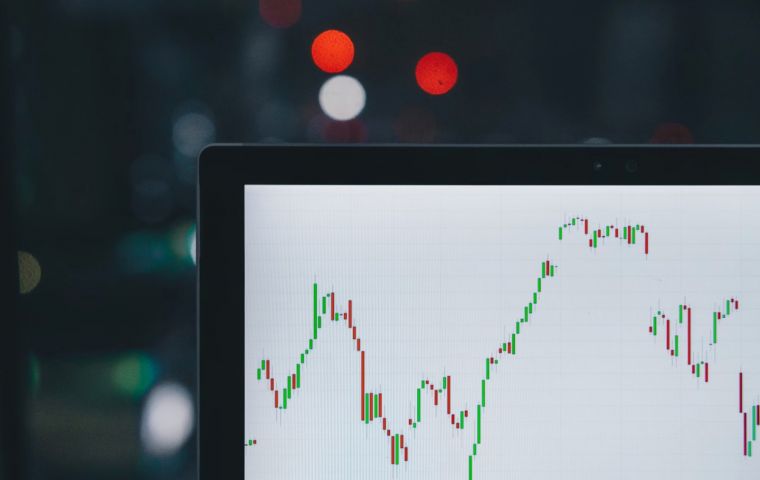MercoPress. South Atlantic News Agency
Forex in South America: Growing Trend or Calculated Risk?
 Photo: Unsplash
Photo: Unsplash Latin America (South America) is experiencing unprecedented growth in forex trading. Is it a growing trend or a calculated risk? The numbers are saying it's an exciting and growing trend, but it's essential to understand the risk. Countries like Brazil, Mexico, Chile, Peru, and others are leading the drive for the growth of the market, with a notable increase in 2024.
These countries hold massive populations, with reports saying the area is 'poised for significant growth' in the coming years as the financial markets begin to stabilize and the economy grows.
Read on to learn if forex trading is a growing trend in the area or if it's a calculated risk.
Forex Trading in South America
The average daily forex trading volume exceeds $7.5 trillion—those are numbers that South America can't ignore.
Despite having a somewhat more developed economy, that isn't stopping forex from becoming a growing trend. In April 2025, it was recorded that there were 600,000 active forex traders across the region, with many more expected to join the market as the years go on. With accessibility to trading platforms and apps increasing and the hype around forex trading continuously growing, it's no wonder this dense population wants a piece of the forex pie.
Why There's a Growing Trend
One of the main reasons South America is experiencing a growth in forex trading in 2025 and will continue to do so for years to come is mainly thanks to economic liberalization. Without going into the politics and the financial determinants this region of the world has faced for many years, things are beginning to improve.
Many of the regions in South America have created policies to help open up the economy and bring in new foreign investment. Foreign investment means more cash flow and more people who are aware of the fact that foreign investment means trading foreign currencies, so the forex trend is growing.
One example is Brazil, the largest South American economy, which has recently significantly reformed its financial sector to open it up to more of the public and globally to foreign investments. The measures have therefore helped to stabilize the currency and reduce what was once awful exchange rate volatility.
It isn't the only part of Latin America to do that, and the stabilization of the exchange rates is making it more attractive for people living in the country to start trading.
There are also factors like an increase in online accessibility and forex trading platforms that are giving locals the opportunity to get online and learn to trade with demo trading accounts. Mobile trading apps, specifically, have become immensely popular in the area.
Finally, there's better regulation. In Mexico, for example, you've got the National Banking and Securities Commission (CNBV) overseeing Forex brokers and compliance with local regulations.
That being said, it's not something that's common in every region in Latin America. Venezuela, for example, is grappling with economic uncertainty and political control that's preventing people living there from even dreaming about forex trading, let alone doing it.
Still, on the whole, Forex trading in Latin America is far more lucrative, exciting, and definitely growing.
How to Forex Trade in South America in 2025
Getting into forex trading in South America in 2025 is an excellent idea. You do not need an expensive trading account or thousands of dollars.
You need to pick a reputable broker that accepts traders from your country. Trading platforms have gained massive popularity because they offer tight spreads, low fees, and easy-to-use apps.
Once you have your broker, you will want to open a demo account first. You should not throw your money into a market you don't understand. Demo accounts let you practice trading with fake money while getting used to how the market works.
Learning about technical analysis, economic indicators, and major forex pairs is the next logical step to learn what forex trading is. Many top brokers now offer free tutorials, webinars, and even daily trading tips for users across South America.
And always stay informed. Keep an eye on local economic news because changes in policies or elections can cause massive movements in currency prices.
Starting forex trading in Latin America is no different from any place now there's so much more accessibility.
The Best Forex Trading Strategies
You will want a strategy that matches the local market conditions. You cannot just copy a strategy from a trader in London and hope it works.
One of the best strategies for South American traders in 2025 is swing trading. Swing trading is holding a position for several days or even weeks to capitalize on medium-term price moves. This works well because the market can be a little more volatile in these regions compared to Europe or North America.
Another strong choice is trend following. If you spot a currency pair trending strongly, say USD/BRL (Brazilian Real), it often pays to jump in and follow the trend. You do not fight the trend, you flow with it.
For beginners, scalping might sound exciting, but it demands lightning-fast decision-making and low transaction fees. We definitely wouldn't suggest this. It is better suited to people who can sit at their desks all day, which is not realistic for most casual traders across South America.
Finally, risk management is not a strategy, but something we want to talk about. Any failed trader would have done a poor job at risk management. Always set stop-loss orders and never trade with more than you can afford to lose. It sounds obvious, but it is where most beginners trip up. Anyone who doesn't have a stop-loss order set-up is just asking to lose money, and it's so easy to set up - click a few buttons and set a limit and you've got a stop-loss.
Forex trading in South America in 2025 is booming and shows no signs of slowing down. Still, with great opportunity comes great risk. Forex trading in Latin America is definitely a growing trend, but the calculated risk isn't limited to the region.
No matter where you are, forex trading is a calculated risk.




Top Comments
Disclaimer & comment rulesCommenting for this story is now closed.
If you have a Facebook account, become a fan and comment on our Facebook Page!